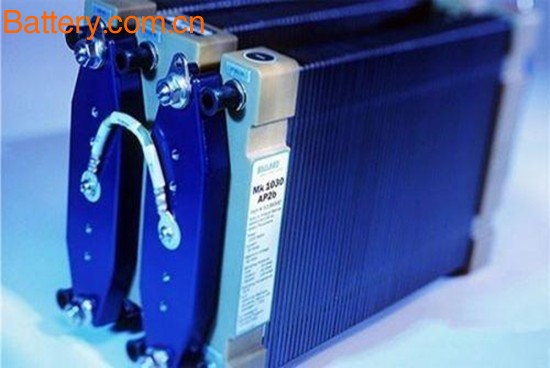Recently, news of the company's over-allocation of fuel cells has continued to come, and the enthusiasm of capital for fuel cells continues to rise. And if you turn back the time to a year ago, fuel cell practitioners may not dare to think of this favor. In 2017, Battery China Network witnessed the tremendous changes that the fuel cell industry has made in this short period of time. We are impressed with every detail of the fuel cell incident. On October 20, 2017, when the National Science and Technology Minister Wan Gang inspected Yihuatong, he pointed out that the development of China's hydrogen fuel automobile industry needs to form an industry situation that is “overwhelming and overwhelmingâ€. Throughout the year of 2017, fuel cell research institutes were established one after another. Several R&D projects passed the acceptance test. The fuel cell standards were gradually improved. Many fuel cell vehicles passed the announcement, and many companies took large fuel cell orders. Although the fuel cell has not been "overwhelming", it has become an unstoppable trend. Fuel cell research institutions have sprung up In the past year, fuel cell research institutions have sprung up. They use their advantages in resource integration to transform technology into products, strengthen the deep cooperation between upstream and downstream enterprises in the industry chain, and promote the industrialization of fuel cells. The aspect will have a lot to offer. In March 2017, Beijing Hydrogen Fuel Cell Engine Engineering Technology Research Center was officially listed. The center's position is to create an engineering research and transformation platform and third-party authoritative testing institutions. The research direction is mainly to improve the reliability of fuel cell engines. Sex and production consistency, reducing costs, increasing engine life and so on. In December 2017, the Sichuan Provincial Key Laboratory of Metal Fuel Cells, the first key laboratory of metal fuel cells in Sichuan Province, passed the expert review. The laboratory mainly focuses on the energy storage properties and discharge laws of metal fuel cells, the harmless treatment of waste aluminum, and the recycling of fuels. Also in December 2017, Zhengzhou City Fuel Cell and Hydrogen Engineering Technology Research Center was approved. According to Battery China.com, this is the first professional research and development platform for fuel cells and hydrogen energy in China's bus industry. The research center will rely on the advantages of Yutong New Energy Technology to develop high reliability, high stability and high environmental adaptability fuel cell system integration and control technology, and simultaneously develop high safety, high hydrogen storage density hydrogen system integration and rapid hydrogenation technology. Establish and improve the fuel cell test evaluation system. In addition to the sudden emergence of research institutions, heavyweight research projects have begun and passed acceptance. In 2017, the national key project for new energy vehicles in 2017 - "Research and Development of Vehicle Rapid Dynamic Response Fuel Cell Engine" was officially launched. The "12th Five-Year" National 863 Program Project "Key Technologies for Reliability and Durability of Fuel Cell Backup Power System" The study "passed the acceptance. In January 2018, the "Methanol Fuel Cell Series" project, which was led by Sun Quanquan, a researcher at the Dalian Chemical Institute's Alcohol Fuel Cell and Composite Electric Energy Research Center, also passed the acceptance test. Domestically, the technical research on fuel cells has been stepped up, and scientific research projects have been carried out in an orderly manner, which has provided strong support for the development of the fuel cell industry. Fuel cell standards are getting better and better For standards, different organizations, documents, and definitions are different, but their importance is unanimously recognized. Liu Fei, chief representative of ASTM International China Office, believes that standards are the common "language" of business and that transactions cannot be concluded without standards. To achieve large-scale commercialization of fuel cells, it is necessary to achieve standardization first. In 2017, China's fuel cell related standards began to gradually improve. In December 2017, China's first hydrogen energy group standard - "proton exchange membrane fuel cell vehicle fuel hydrogen" (T / CECA-G 0015-2017) was officially released, the standard by Tongji University, Chinese Academy of Sciences Dalian Chemical Physics 11 research institutes and research institutes such as the Institute and the China National Institute of Standardization have jointly formulated. The introduction of this group standard has important guiding and normative significance for improving the hydrogen quality of fuel cells in China. According to the incomplete statistics of China Battery, as of the end of 2017, there are more than 60 standards related to fuel cell stacks, fuel cell vehicles and hydrogen refueling stations. Experts in battery standards have revealed to the battery China network that a number of fuels have been Battery-related standards are under development and will further improve China's fuel cell standards after the announcement. Fuel cell commercialization breaks ahead In 2017, Battery China Network witnessed the breakthroughs in the field of fuel cell and fuel cell vehicles. Although the pace is not large, it has been moving forward and never stopped. On June 16, 2017, Wuzhoulong Co., Ltd. released the “F1 Future†series of hydrogen fuel cell road buses. The fuel cell road bus is a 8.5m hydrogen fuel cell road passenger car jointly developed by Wuzhoulong Co., Ltd., Xiongyu Power Technology, Beijing Hydrogen Co., Ltd. and Zhejiang Hydrogen Co., using a 30kW hydrogen fuel cell stack (hydrogen ç’ž 创 能) + Lithium iron phosphate battery (power type) combined technical route, lasting up to 430km. On September 20, 2017, the second generation hydrogen fuel cell passenger car “Hydrogen Yang†jointly developed by Hubei Yangzijiang Automobile and Wuhan Hydrogen Energy Co., Ltd. was released. Wuhan hydrogen fuel cell bus has taken a big step toward large-scale production. On October 26, 2017, the world's first commercial hydrogen-fuel hybrid 100% low-floor modern tram developed by CZ Tangshan Company was operated by passengers in Tangshan City, Hebei Province. This is also the first commercial operation of hydrogen fuel cell trams worldwide, marking a major breakthrough in the field of new energy rail transit. According to statistics, in the 12 batches of new energy vehicle recommended catalogues announced in 2017, a total of 22 fuel cell models entered the catalogue. Among all the fuel cell suppliers of the selected models, Yihuatong accounted for 11 models, accounting for 50%; In addition, fuel cell products from Guangdong Guohong Remodeling Energy Technology, Xinyuan Power and other companies have also entered the list of suppliers. On the whole, although the proportion of fuel cell vehicles in all models, compared with a pure electric vehicle type is still insignificant, but it is already a good start. In 2017, supported by the Global Environment Facility and the United Nations Development Program, the third phase of the “Promoting the Commercialization of Fuel Cell Vehicles in China†organized by the Ministry of Science and Technology of China publicized the results of the vehicle procurement tender. Yutong Hydrogen Fuel Cell Bus successfully won the bid and planned Demonstration operations were carried out in Zhengzhou City, Henan Province. The project will vigorously promote the promotion and application of fuel cell vehicles in China, thus driving China to realize the full commercialization of fuel cell vehicles. In addition, in the fuel cell market in 2017, ZTE won the order for India's $1 billion fuel cell, and SAIC Chase has also won 100 FCV80 light passenger orders. Factors affecting the commercialization of fuel cells include regulations, policies, technologies, markets, and infrastructure. Yi Baolian, an academician of the Chinese Academy of Engineering, believes that the fuel cell should be operated on a large scale. First, the fuel cell engine must reach the safety structure and the service life reaches 5,000 to 10,000 hours to meet the requirements of the vehicle. Secondly, the price of the car is deducted from the government subsidy. outside, it should be close to the lithium battery or fuel vehicles; third, there must be plenty of cheap hydrogen fuel supply; fourth, to be profitable without government subsidies, to achieve commercialization. Academician Yi Baolian believes that it takes about three years for China to realize the large-scale commercial application of fuel cells. Fortunately, at present, China's fuel cell industry has hanged long sails and began to move toward large-scale commercialization. Author: Zhou Jing effect
Wood Gear Clock includes bamboo wall clock and wood wall
clock. Wood is a modern natural style, which gives you a relax and fresh experience. Wood Gear Clock with ABS moving gears that move independently. Wood Gear Clock is the combination of art and time.
Our company is a professional manufacturer and exporter of a variety of handicrafts. Our company has been highly commented and trusted by the worldwide business partners for the diversity and high quality of our distinctive products in the past years.
Wood Gear Clock,Wooden Gear Clock,Wood Clock,Wooden Gear Clock Kits Guangzhou Huan Yu Clocking Technologies Co., Ltd. , https://www.mk-times.com
